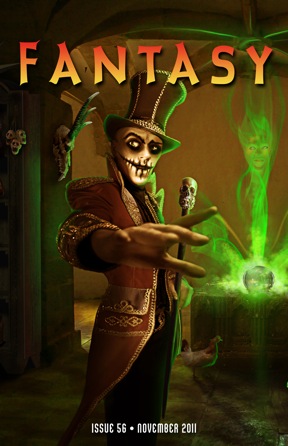Blogging Sax Rohmer’s The Hand of Fu Manchu, Part One – “The Flower of Silence”
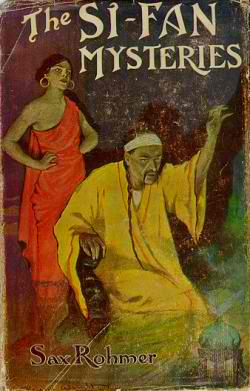
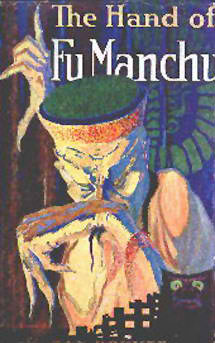 “The Flower of Silence” was the first installment of Sax Rohmer’s The Si-Fan Mysteries. The story was first published in Collier’s on April 8, 1916 and was later expanded to comprise the first four chapters of the third Fu-Manchu novel, The Si-Fan Mysteries first published in 1917 by Cassell in the UK and by McBride & Nast in the US under the variant title, The Hand of Fu Manchu. This third serial began only four months after the second concluded. The US book title marks the first time that the hyphen was dropped from the character’s name, although it was retained within the text.
“The Flower of Silence” was the first installment of Sax Rohmer’s The Si-Fan Mysteries. The story was first published in Collier’s on April 8, 1916 and was later expanded to comprise the first four chapters of the third Fu-Manchu novel, The Si-Fan Mysteries first published in 1917 by Cassell in the UK and by McBride & Nast in the US under the variant title, The Hand of Fu Manchu. This third serial began only four months after the second concluded. The US book title marks the first time that the hyphen was dropped from the character’s name, although it was retained within the text.
“The Flower of Silence” finds Nayland Smith and Dr. Petrie rooming at the New Louvre Hotel in London. Smith has been recalled from Cairo by his superiors. When the story opens on a chilly November night, Smith has returned to their apartment to inform Petrie that he has just leaned the name of the mysterious secret society that the late Dr. Fu-Manchu served; it is the Si-Fan and is based in Tibet. The reason for Smith’s recall to London is that Great Britain’s former Ambassador to Peking, Sir Gregory Hale has recently returned to London following the completion of his expedition to Mongolia. Sir Gregory was to have delivered a report on Tibetan Lamaism to the India Office but has failed to do so. Sir Gregory has not left his suite at the New Louvre Hotel since his return for Sir Gregory has uncovered the existence of the Si-Fan and will only share that secret with Nayland Smith.
Upon their arrival at his suite, Smith and Petrie learn from Sir Gregory’s valet, Beeton that the former Ambassador has been struck dumb and can only mutter incoherently. He dies in his bed shortly after Smith and Petrie’s arrival but leaves behind a cryptic message scrawled in a notebook containing the mysterious phrases:
“Guard brass box…Tibetan frontier…Key of India…Beware man with the limp…Yellow rising…Watch Tibet…the Si-Fan”
 I still haven’t quite come to grips with The Hobbit in 3D. I’ve got a few 3D films under my belt—Avatar, Captain America, Green Lantern, and Jaws 3—and to be honest, the added dimension hasn’t done much for me. Avatar made the most of it with its rich images of Pandora; the other films felt like they were trying to capitalize on a fad (hey, look, there’s a shield coming at me!) in order to take in a few extra bucks at the gate.
I still haven’t quite come to grips with The Hobbit in 3D. I’ve got a few 3D films under my belt—Avatar, Captain America, Green Lantern, and Jaws 3—and to be honest, the added dimension hasn’t done much for me. Avatar made the most of it with its rich images of Pandora; the other films felt like they were trying to capitalize on a fad (hey, look, there’s a shield coming at me!) in order to take in a few extra bucks at the gate.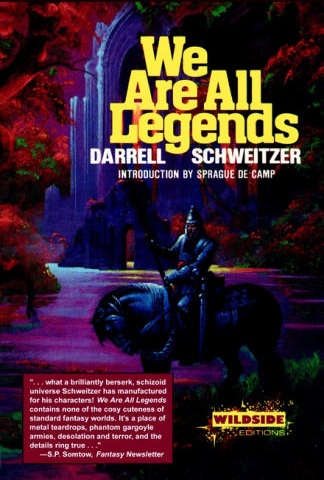 Swords Against Darkness.
Swords Against Darkness.
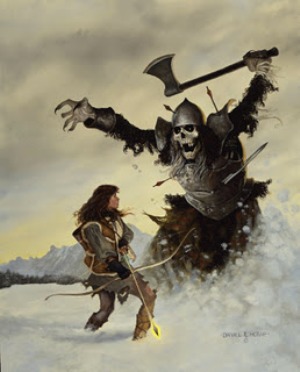
 I’ve discussed
I’ve discussed  Scarce Resources, by Brendan Detzner
Scarce Resources, by Brendan Detzner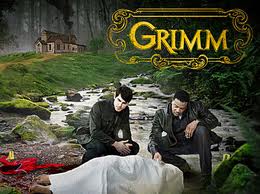 Another week, another set of new television goodness from the non-cable networks. Seriously, after a year where there’s been very little mainstream science fiction and fantasy on television, it’s nice to see it coming back in such full force. I’m still divided on which of the new shows I most like (though I still probably lean, just a touch, toward Once Upon a Time), though, and both seem to have some potential.
Another week, another set of new television goodness from the non-cable networks. Seriously, after a year where there’s been very little mainstream science fiction and fantasy on television, it’s nice to see it coming back in such full force. I’m still divided on which of the new shows I most like (though I still probably lean, just a touch, toward Once Upon a Time), though, and both seem to have some potential. I’m taking a bit of a break from the Romanticism and Fantasy posts, as I’ve got a few other things I’d like to write about. To start with, since I discussed Alan Moore’s Marvelman a few weeks ago, I thought I’d take a look now at V For Vendetta. V started as a series that ran, like Marvelman, in the early 80s in the black-and-white anthology magazine Warrior. Though the story was left incomplete when Warrior folded, in 1988 the series was republished in colour by DC Comics, and Moore and artist David Lloyd were able to finish it as they’d hoped. (Some spoilers for the book follow; also spoilers for Watchmen, oddly enough.)
I’m taking a bit of a break from the Romanticism and Fantasy posts, as I’ve got a few other things I’d like to write about. To start with, since I discussed Alan Moore’s Marvelman a few weeks ago, I thought I’d take a look now at V For Vendetta. V started as a series that ran, like Marvelman, in the early 80s in the black-and-white anthology magazine Warrior. Though the story was left incomplete when Warrior folded, in 1988 the series was republished in colour by DC Comics, and Moore and artist David Lloyd were able to finish it as they’d hoped. (Some spoilers for the book follow; also spoilers for Watchmen, oddly enough.)